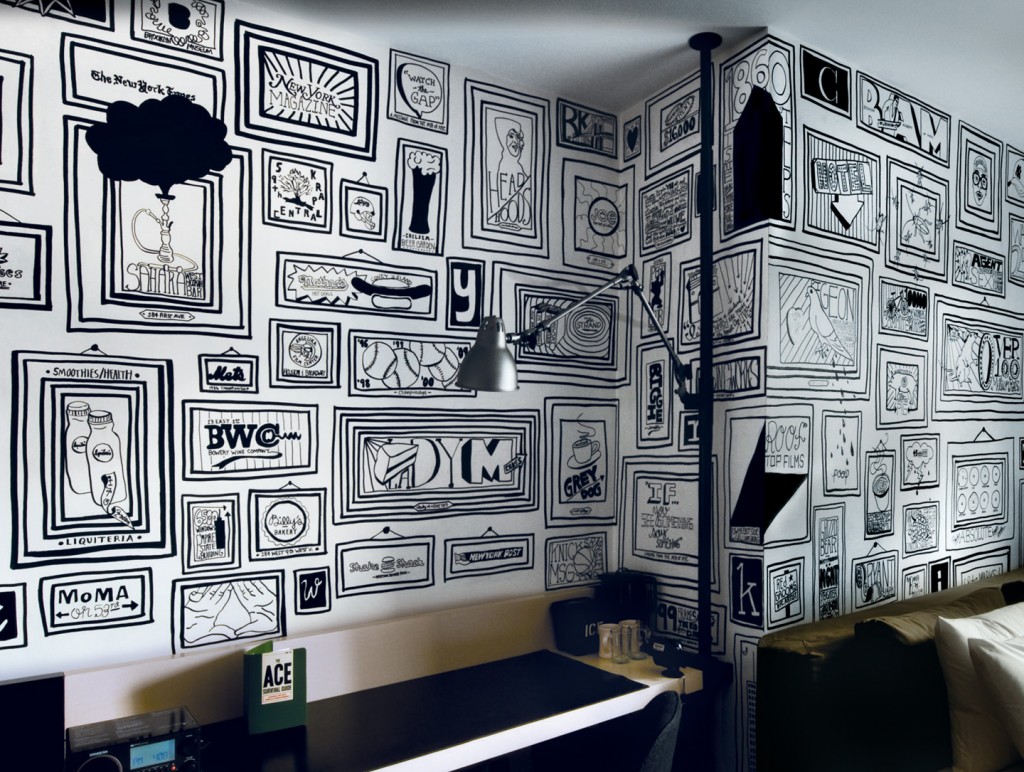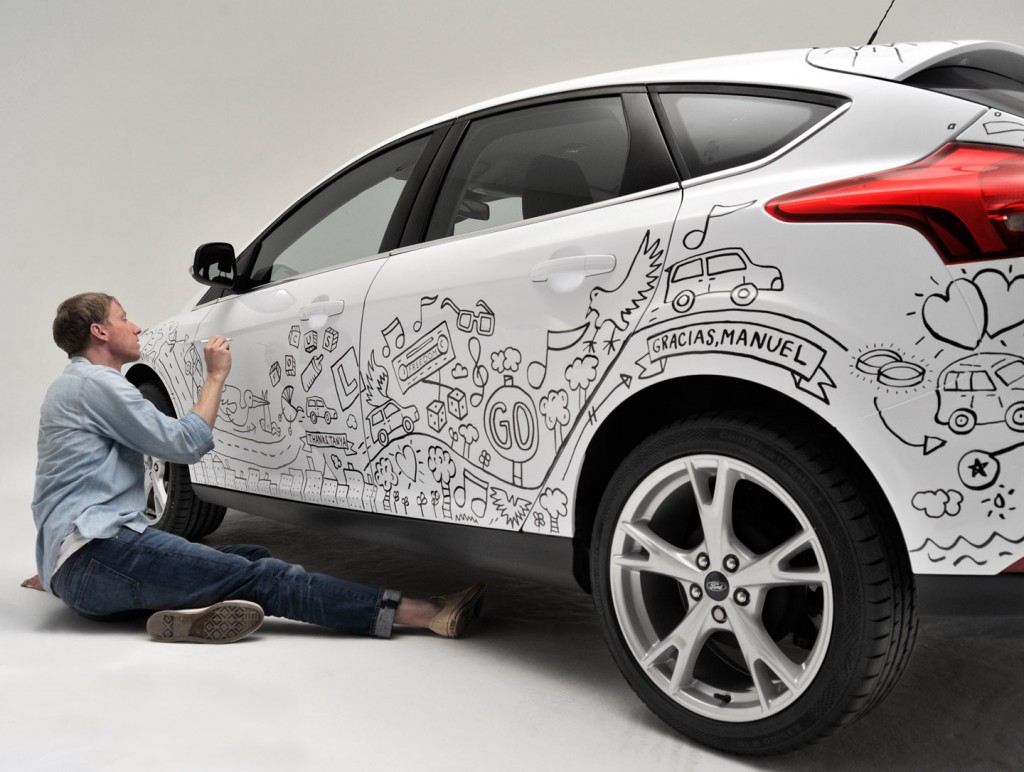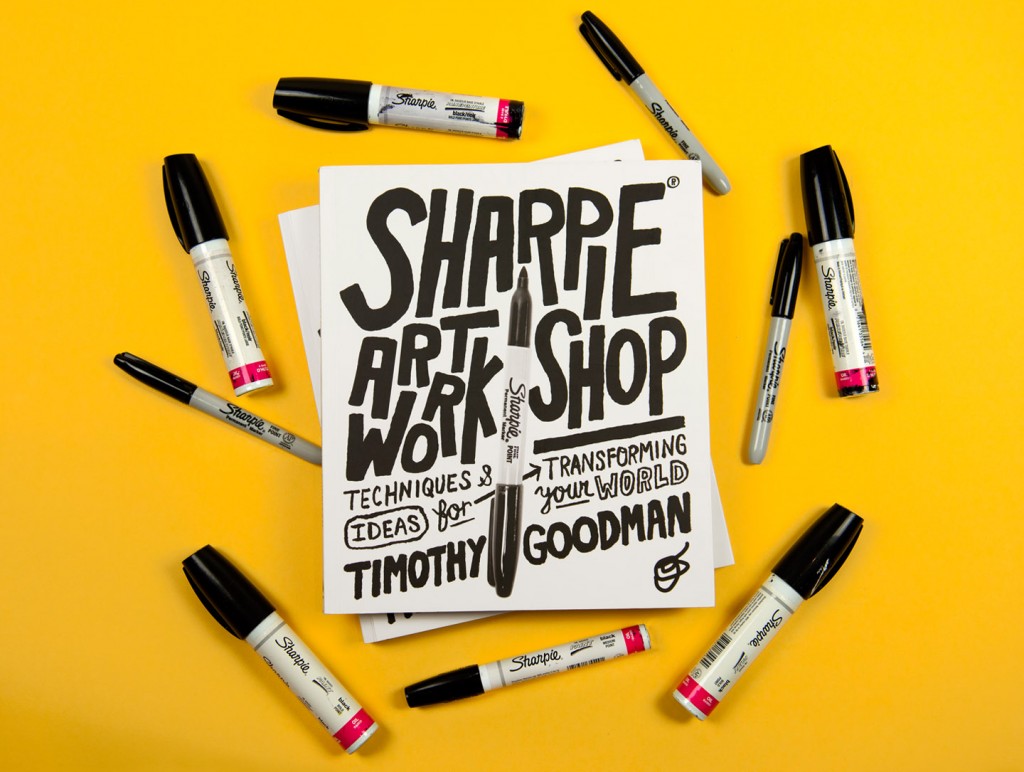Collaboration, side projects, and the how and why of employing analog techniques are consistently three of the hottest topics in the design profession. When we look at those three categories it’s not hard to see why they resonate so strongly with creatives. When put into practice they represent freedom and creativity on our own terms.
The freedom to work how we want (digital/analog), with who we want (other like minded individuals), on what we want (sans-client) represents a crag in the pinnacle of a design life. Sadly, though, reality is a harsh mistress. Time is precious, bills have to be paid, and buying out enough of time outside the studio/office to tackle those side projects, hunt down collaborators, or even sit down long enough to develop those skills can be a challenge.
Yet, the truth of it is that, when we look at designers today who are pulling away from the pack, where do they spend their time? Most often, you can attribute their successes to side projects, collaborations, or re-investing into their skill sets (like developing a strong analog side). Go figure. So, time, while an issue, is apparently not an excuse. It seems carving out the time is essential to advancement.
One stellar example of this mindset is New York-based designer and illustrator, Timothy Goodman. His side projects with Jessica Walsh have been featured in magazines and news outlets around the world. The 40 Days of Dating side project was such a huge success that Goodman and Walsh were able to develop an incredible book documenting their social experiment and even sold the movie options to Hollywood afterwards. Timothy is also well known for his Sharpie-based illustration style which has adorned hotels, cars, packaging, and a variety of other blue chip projects you’ve probably seen. The analog process is something that he takes pride in, and an investment in himself that has paid off big time.
Timothy was good enough to chat with us for a few minutes about his work and the importance of re-investment.
Connecting to another person with my work is one of the greatest joys.
Your upcoming Sharpie workshop for AIGA Portland’s Typefest event that takes place during Design Week Portland – and the WebVisions conference series – emphasize analog techniques and bringing new life to old stuff through the creative process. Why do you feel it’s important for designers to utilize old materials in new ways?
While this workshop will explore effects, techniques, mediums and ideas about how to use Sharpie in your life with a series of short exercises, this class will also demonstrate finding your own voice and sensibilities in your work. From making handmade gifts, to creating murals, to repurposing old objects, to writing and authoring projects, we can bring a tremendous amount of creativity and joy to ourselves and those in our life. While Sharpie is the hands-on tool, I’m more interested in seeing how we can use the tools of our life to connect to people with our work.
Along those lines, deciding what to keep for future creative pursuits vs. what not to takes practice and “vision”. What is your process for recognizing the potential in discarded stuff and making the connection to a potential project?
I must have an emotional connection to it, and I must think that will potentially connect to others. Connecting to another person with my work is one of the greatest joys. I’m also always interested in infusing imperfection and humor in my work as much as possible. I’m interested in being vulnerable with my work and sharing that with an audience.

There is always an emphasis (from the industry) on honing digital work and using new creative software. What, in your opinion, is the benefit of developing an analog component to your work?
It feels more human and immediate to do work by hand. It’s important to stay with the trends, too. However, with all my work, it’s important to start with ideas first. Then try to highlight personal experiences and/or sensibilities.
Designers working today are expected to be knowledgeable in a variety of areas. Which key areas are important for a designer to focus on and what skill sets should they invest their time developing?
Obviously it’s important to understand how to design in all areas. However, outside of learning the skills needed, becoming a more well-rounded and interesting person is what will separate you and make your work more memorable.
Read things you’re interested in like poetry, opinion pieces, world history, science, biographies, mythology, etc. Watch movies, look at fine art, listen to music, fall in love, get your heart broken, have a one-night stand, travel, make mistakes. I believe these are the keys to making a better designer.
Building on that, you’re a lecturer at The School of Visual Arts in New York (SVA), do you think current design education is able to adequately meet the diverse needs of today’s designer? In your mind, how does today’s design student get the most out of their education?
You can never get everything you need from one class, one teacher, one university, one project, or one job. A student needs time, and they need many experiences. Furthermore, with any profession, they really need the passion and ambition to carve out the space for that, to take risks, and to push themselves in other areas. And they need people to help them. In my own experience as a student at SVA, I was constantly bothering all of my teachers to look at my work, to give me advice, and to help me become better. Asking for help when you’re starting out is important.

Working across a wide variety of mediums seems to be something you enjoy doing–from working on neon signs to editorial design to hand drawn mural work. What role should variety play in a designer’s development? Why is it important?
I can’t speak for anyone else, but I personally just get bored quickly. I’m interested in expressing myself in a lot of ways via illustration, writing, social experiments, design, etc. It’s always been important to me to find my own voice and share it. I start with the ideas first, and let that dictate the way it’s executed.
You’ve moved on from the wildly successful 40 Days of Dating project to collaborate on another project with Jessica Walsh on the theme of kindness. Why did you choose kindness as a theme, and what does the project look to do?
It was right after 40 Days of Dating ended that we started asking ourselves these questions. We regretted the way we handled things and felt sorry for the way we treated each other. We kept coming back to one word: empathy.
We view the world through the filter of our own ego and tastes, we help people only in situations we connect to, make assumptions about those we don’t understand, and surround ourselves with others who share our same beliefs. But with a little effort, could we learn to open our hearts and minds to become kinder, more empathetic people? This was the foundation for the 12 Kinds of Kindness experiment we designed to confront our selfishness and apathy.
You’ve collaborated on a couple of projects with Jessica over the past couple years. What is the benefit of teaming up with another designer to work creatively? What have you found to be the hurdles, challenges, and benefits of collaborating on work?
We both have the same vision for the kind of work we want to make. We’re both interested in merging our personal and professional lives more by using our tools as designers to have larger dialogues with all kinds of people. On the day-to-day level, we don’t sugar coat anything with each other. We challenge the hell out of each other and we’re brutally honest and sometimes we want to kill one another. We both have unique skill sets that help make the projects more robust.

Your second book, Sharpie Art Workshop, was just released. How did this book come into being?
An old teacher of mine always says, “If you want to change your tool then change your look.” Five years ago I made a decision to get my hand in my work more, and it all started when I had the opportunity to do a mural for the Ace Hotel in NYC. I basically locked myself in this hotel room for three days with a Sharpie Paint Marker. Since then I’ve adopted a whimsical hand-lettering & drawing style that I now do for a variety of clients such as an installation in Airbnb HQ, drawing all over a new Ford car, and art for Starbucks. I also use Sharpie for the personal stuff I do, like my 2Pac mural in Las Vegas and my Instagram writing series, Memories of a Girl I Never Knew. It’s really become an extension of me and my work, so this book only made sense for me to author.
Again, we go back to analog processes and their importance. What role does the Sharpie (or permanent marker) play in that process, and why have you found it to be such an important material tool in your projects?
Sharpie is kind of the ‘everyman’ marker: kids use them to draw pictures, athletes use them to sign autographs, artists use them in their work, some people might use them to touch up a scratch on their piano, my mom uses them to write a grocery list, etc.
Have organized professional design groups, like AIGA, played a role in your career, and if so, how have they benefitted you?
As a young designer starting out, they were very important to me. Winning awards from organizations and group like the AIGA early on gave me the confidence to keep working on my craft, taking risks and pushing the boundaries of what I think design is and can be.
– – –
AIGA Portland will be hosting a workshop with Timothy on April 19 at PNCA–part of Design Week Portland. It will highlight various Sharpie techniques while also exploring ways to find your own voice and the sensibilities in your work.
Register today!
– – –
 Erin Lynch is a designer & writer living in Vancouver, WA. He owns shop, a design studio, is the Production Manager of A List Apart and an editor at WebVisions and The Portland Egotist. Reach out and make friends on Twitter: @erinlynch.
Erin Lynch is a designer & writer living in Vancouver, WA. He owns shop, a design studio, is the Production Manager of A List Apart and an editor at WebVisions and The Portland Egotist. Reach out and make friends on Twitter: @erinlynch.